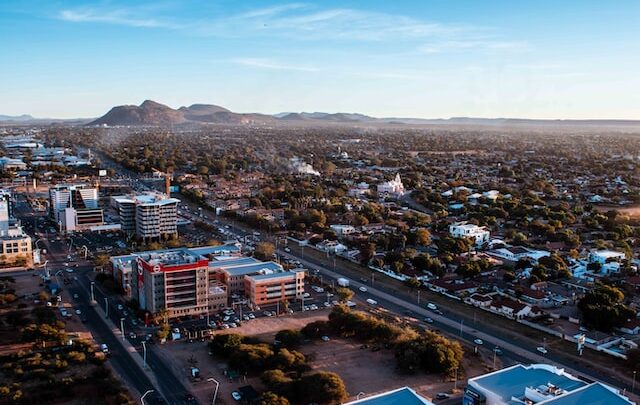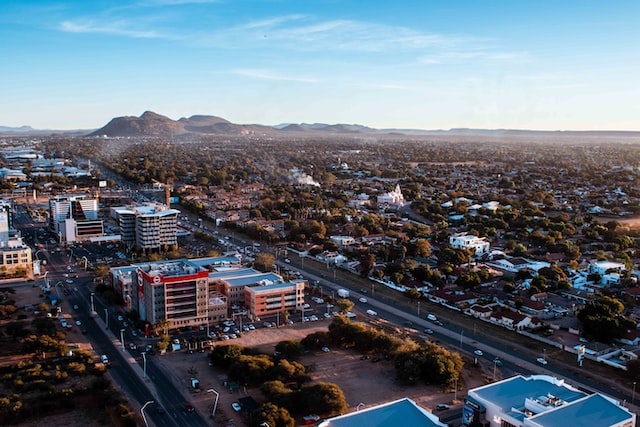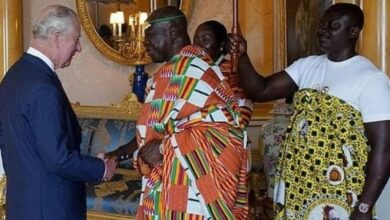Botswana Facts, History, Culture & Travel – Africa Facts Zone

Botswana, a landlocked country in southern Africa. It is lined by Namibia, South Africa, and Zimbabwe.. Roughly 66% of the nation exists in the Tropics.
Botswana is notable for having the absolute best wild and natural life regions on the African landmass. 38% of its land region are committed to public parks, reserves and wildlife areas. The nation is scantily populated on the grounds that up to 70% of the nation is covered by the Kalahari Desert.
Background
The earliest occupants of the area were the San, who were trailed by the Tswana. About a large portion of the nation today is ethnic Tswana. The term for the country’s people, Batswana, refers to national rather than ethnic origin.
Infringement by the Zulu during the 1820s and by Boers from Transvaal during the 1870s and 1880s compromised the tranquility of the locale. In 1885, Britain laid out the region as a protectorate, then known as Bechuanaland. In 1961, Britain allowed a constitution to the country. Self-government started in 1965, and on Sept. 30, 1966, the nation became autonomous. Botswana is Africa’s oldest democracy.
The new nation kept up with great relations with its white-managed neighbors however progressively changed its arrangements, holding onto rebel bunches from South Rhodesia as well as some from South Africa.
In 1999, the nation suffered its first budget deficit in 16 years because of a slump in the international diamond market. However Botswana stays one of the richest and most stable nations in Africa.
Following 17 years in power, President Ketumile Masire resigned in 1997, and Festus Mogae, an Oxford-taught financial expert, turned into the new president. Mogae has won excellent grades from the worldwide monetary local area for proceeding to privatize Botswana’s mining and modern activities.
In the wake of serving 10 years as agent president, Ian Khama, the child of Botswana’s first president, Seretse Khama, was initiated as president in April 2008. Festus Mogae stepped down after 10 years in office. Khama won a five-year term in October 2009, when his Botswana Democratic Party (BDP) party won 45 out of 57 seats in Parliament.
In the 2014 political decision, Ian Khama won a second term as president. It was the 11th consecutive triumph for his Botswana Democratic Party (BDP) party. BDP took 37 of the 57 National Assembly situates. During his 2014 mission, Khama promised to take on neediness and joblessness in his next term.
On April 1, 2018, Mokgweetsi Eric Keabetswe Masisi was sworn in as the 5th President of Botswana. After he ascended to the presidency, his predecessor Ian Khama left the ruling Botswana Democratic Party (BDP) to found the Botswana Patriotic Front (BPF). Khama criticized Masisi for lifting the ban on elephant hunting and called his decision to appoint Masisi as his successor a “mistake”.
Also Read: Benin Republic Facts, History, Culture & Travel
Demographics
The main ethnic groups are Tswana, Kalanga, Bushmen, and AbaThwa. The Bambukushu, Basubia, Bayei, Baherero, and Bakagalagadi. Whites and Indians are likewise present yet in little numbers. The white populace regularly communicates in English or Afrikaans and is roughly 3% of the populace.
Language
English is the authority language in Botswana. Setswana is likewise generally spoken. The prefixes in Setswana are a higher priority than in different dialects. The prefix “Bo” alludes to the country and “Ba” alludes to individuals. Individuals overall are known as the Batswana and an individual is “Motswana.”
Religion
70% of the residents are Christian. A large portion of these are Anglicans, Methodists, and the United Congregational Church of Southern Africa. Different factions exist in more modest numbers. Native religions make up 23% of the populaces. 5,000 Muslims, for the most part of South Asian beginning, dwell in Botswana. 7,000 Baha’is and 3,000 Hindus additionally dwell in the country.
Facts About the Land
The Kalahari Desert covers more than 80% of Botswana bringing about its environment being for the most part bone-dry to semi-bone-dry. Rainfall happens mostly in summer with the busy times being in January. The normal rainfall is around 500mm each year in the upper east and under 250mm in different pieces of the country.
The Okavango River goes through the focal point of the Kalahari Desert, making the exceptional biological system known as the Okavango Delta, from which the bountiful bird and natural life populaces prosper. The Okavango River Delta is one of the world’s biggest inland deltas. Chobe National Park is situated on the banks of part of the Okavango River and is home to north of 120 000 Elephants.
Facts about the Economy

In spite of being ‘in third-world Africa’, Botswana is a very wealthy or rich nation because of the .
A politically steady nation and the vast majority of the populace partakes in an exclusive requirement of living. Botswana has kept one of the world’s most elevated monetary development rates starting around 1966.
The greater part of the diamonds mined in the nation are mined by an organization called Debswana, a 50/50 joint endeavor among DeBeers and the Botswana government. The most extravagant mine in the nation, and in the whole world is situated in the south and is known as Jwaneng Diamond Mine.
The money in Botswana is known as the Pula. The Pula has been available for use starting around 1976, before which the nation utilized the South African Rand. The word Pula signifies ‘rain’ in Setswana and alludes to the cash being valuable as Botswana doesn’t get a ton of rain and along these lines it is a significant asset.
More interesting facts about Botswana!
1. What is an individual from Botswana called? A Botswanian? No! As opposed to prevalent thinking, an individual from Botswana is a Motswana, the plural is Batswana and their language is Setswana.
2. Botswana is home to the densest elephant populace on the planet. The best spot to detect them is at Chobe National Park, where they come to the Chobe River Front to play, drink and swim. Along these lines, you won’t just see vehicles on the streets in Botswana; additionally keep an eye out for elephants going across the principle streets.
3. Botswana is the world’s second biggest maker of precious stones. Truth be told, the nation delivered 40 million carats of diamond in 2016.
4. In the event that you wanting to see two African nations immediately, Botswana is the spot to go. The line among Botswana and Zambia traverses only 150 meters, making it the shortest border in the world.
5. Situated in the dry savanna of north-eastern Botswana, the Makgadikgadi Pan is one of the biggest salt pan on the planet. The container is arranged in a space that was once covered by the monstrous Lake Makgadikgadi.
6. Botswana is home to the Kalahari Desert, which takes up around 70% of the whole country. The desert is home to numerous creatures going from Meerkats, Flamingos, and Leopards to African wild canines.
7. Mopane worms are a delicacy in Botswana. Bon Appetit! I bet this is one of current realities about Botswana you would have rather not known about.
8. Botswana’s Makgadikgadi and Nxai Pan public parks are the focal point of the audience for the world’s second biggest, yet generally secret zebra relocation covering a full circle of around 300 miles (500 kilometer).
9. Botswana has the most extravagant diamond mine on the planet. The Jwaneng Diamond Mine is situated in the Southern piece of Botswana. The importance of Jwaneng is “spot of little stones”‘.
10. There are in excess of 150,000 islands in the Okavango Delta, an UNESCO World Heritage Site. The sizes change from two or three meters to a couple of kilometers.
Source Credit: nationsonline.org, infoplease.com, botswana.co.za, africa.com, onhisowntrip.com





